Analysis
Biennials Are Proliferating Worldwide. There’s Just One Problem: Nobody Wants to Pay For Them
Artists are often left to shoulder much of the burden when a biennial requires ambitious new work.
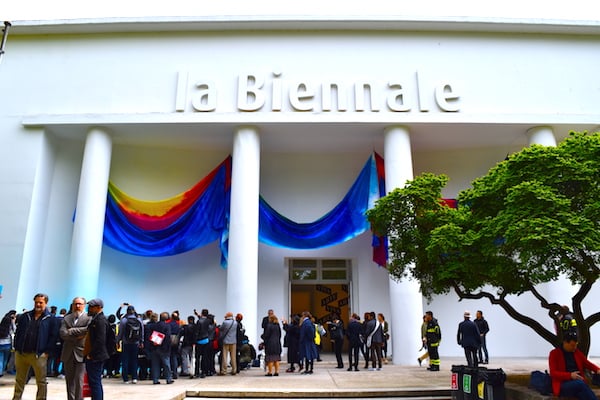
Artists are often left to shoulder much of the burden when a biennial requires ambitious new work.

Kate Brown &
Javier Pes

In less than two months, visitors will begin streaming into the Venice Biennale, an event often described as the art-world Olympics. But as hundreds of thousands of people take in the monumental works by artists from around the world, only a few may stop to wonder: Who actually pays for all this?
The question is the source of increasing concern for a number of players in the art world, including curators, dealers and, above all, artists. Biennials can provide artists a serious valuation and reputation boost—but ambitious new projects also require hundreds of thousands of dollars in production, insurance, and transportation fees, not to mention a lot of time at work in the studio (sometimes as much as a year).
The dynamic creates a complicated financial squeeze, according to interviews with more than 15 artists, curators, and biennial veterans. Some of these rapidly proliferating events, which have popped up everywhere from Honolulu to Oslo over the past 30 years, pay artists nothing to participate. Many offer a fee of just $1,000 or $2,000; the highest sum mentioned was $5,000. Some provide for production and transportation; others rely on artists, or their galleries and collectors, to foot the bill.
What happens behind the scenes—and who pays for it—could very well inform what we end up seeing at these prestigious events, which often help set the agenda for the art world. Some fear that those who can afford to pay—top galleries and private collectors—have the potential to further shift biennials in a commercial direction. At the same time, those who many believe should pay—local governments, arts councils—are contending with smaller and smaller budgets and bigger and bigger ambitions.
In the end, artists are often left holding the bag. “The true fact is that there is something plain wrong about all this,” the Mexican artist Jose Dávila says of the biennial economy, a format that has proliferated rapidly worldwide.
“The Venice Biennale for most of the artists invited is a do-it-on-your-own kind of process,” says Michael Elmgreen of Elmgreen & Dragset, the artist duo who organized the Danish and Nordic Pavilion at the 2009 Venice Biennale and curated the 2017 Istanbul Biennial.
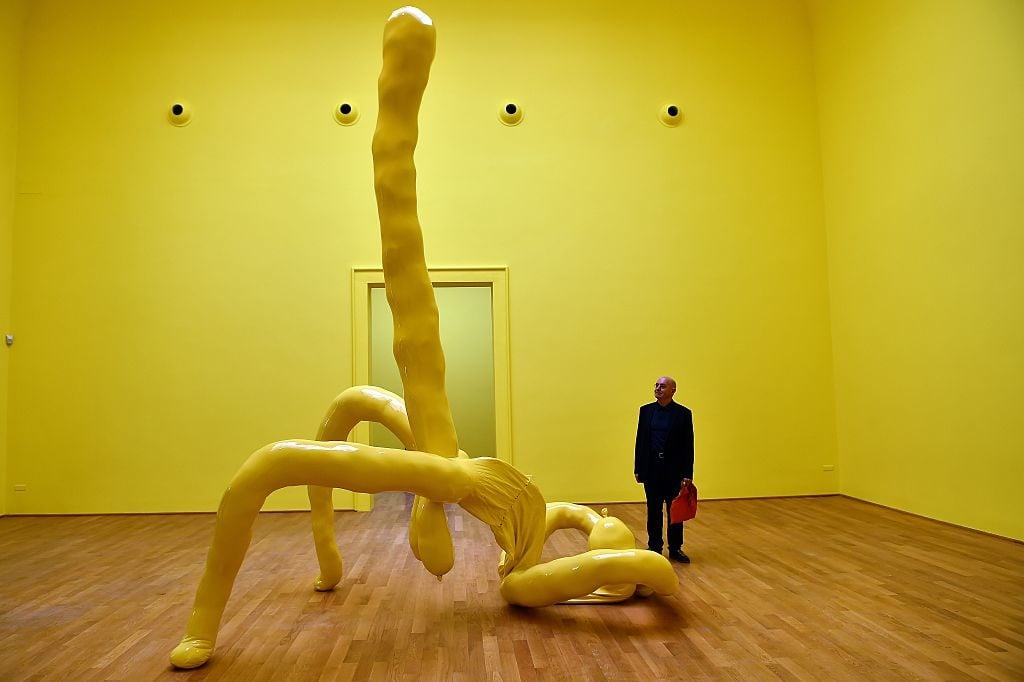
A visitor looks at a creation by British artist Sarah Lucas at the pavilion of Great Britain during the 56th International Art Exhibition in Venice. AFP Photo / Gabriel Bouys.
Biennial budgets are often opaque, even when they receive substantial public funding. Most are organized by a foundation supported by a mix of public and private money. In the US, private donors typically predominate. A small group of philanthropists with links to Palm Springs and the Coachella Valley helped get the Desert X biennial off the ground, for example. The Honolulu Biennial, which opened its second edition this month, raised its $2.7 million budget from foundations, companies, private donors, and “in-kind sponsorship.” (The State of Hawaii declined a $400,000 grant application, despite the inaugural biennial’s estimated $35 million economic impact.)
In Europe, public funding often accounts for the lion’s share of biennial budgets. The Liverpool Biennial, the UK’s largest exhibition of this kind, receives public funding from its home city and Arts Council England. The new Oslo Biennial, officially the osloBIENNALEN, which is due to launch in May, is backed by the Norwegian city. And without the taxpayers of Kassel and the State of Hesse, there would be no documenta in Germany every five years.
But these organizations don’t cover everything. When it comes to paying for production, shipping, and insurance, only a few biennials provide sufficient financial support. Artists are often expected to fundraise for their own projects. And it is frequently assumed that they have their own studio assistants, who they are able and willing to fly out to help during installation.
“Most biennials are based on the idea that they generate a sort of ‘promotion value’ for your work, and that this exposure is benefit enough,” Elmgreen says.
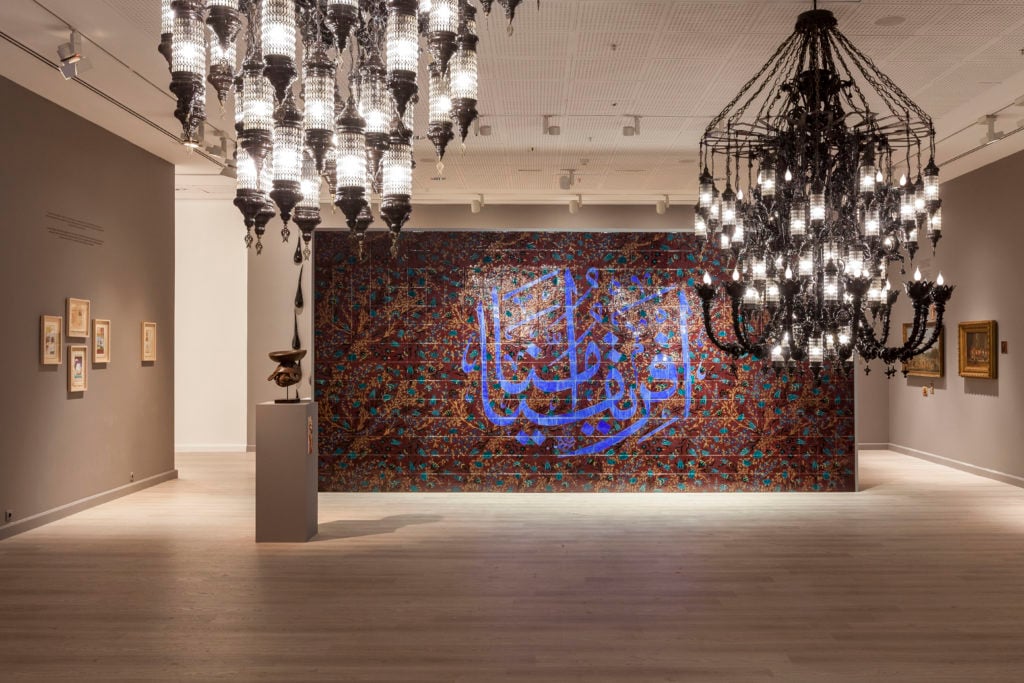
Installation view of Fred Wilson’s Afro Kismet (2017) at the Istanbul Biennial. Courtesy of Pace Gallery and Fred Wilson.
There are, of course, exceptions. Desert X in the Coachella Valley provided each participating artist in its 2019 edition with $25,000 for production costs and $2,500 for proposals (regardless of whether or not they were accepted), according to artistic director Neville Wakefield. Artists’ travel costs for research trips were also covered.
The new Oslo Biennalen is even more generous. Artists receive $3,000 for proposals. They could ultimately receive a total of $17,000 in fees, separate from production costs up, depending on the size and complexity of the work, plus travel, accommodation, and expenses.
The Honolulu Biennial supports artists’ travel, research, and production costs, but does not provide an additional fee. The Riga Biennial, which held its inaugural edition last year, gave artists a €2,000 ($2,260) fee for new work, as well as covering travel, accommodation, production on top of that. But arrangements can vary greatly.
The Riga Biennial’s curator, Katerina Gregos, says the underpayment of artists is a systemic issue. “The result is a situation where almost everyone around the artist is paid (from the installation crew, AV company, exhibition designer, to the designer and printer of the catalogue) except the artist: without whom no exhibition would exist.”
(Curators, for the record, only do a little bit better: When The Art Newspaper surveyed more than 40 curators in 2015, it found that a typical fee for organizing a biennial was around $140,000 for a project requiring two or three years’ work.)

Chiharu Shiota ‘Keys’ is pictured in the Japanese Pavillion, Venice Biennale. May 2015. (Photo by Romano Cagnoni/Getty Images)
Sometimes, artists participate in these exhibitions with little to show for it. Veteran curator Robert Storr, who was the artistic director of the 2007 Venice Biennale, recalls an unnamed artist who participated in one of the European national pavilions that year and went deep into debt to finance her own show.
“None of the biennials that I participated in were sufficiently clear [about the lack of financial support] up front, such that artists would be invited and then they would find out costs fell on them,” he said. “The Venice Biennale took this for granted to a large extent. It puts artists and curators in a difficult position, because if you do not want to be beholden to a gallery, who may start dictating some terms, or you do not have a patron to help, it really limits what you can do.”
The British artist Hew Locke, who has taken part in three Venice Biennales, among other big group exhibitions, has learned to carefully weigh the risks and rewards. “I have had work damaged, gotten lost, not been paid what I was promised, and once the entire biennial was mysteriously canceled,” he recalled. “Other artists I know have had work left out in rain or sun, stuck in customs, or not installed in time for the launch.”
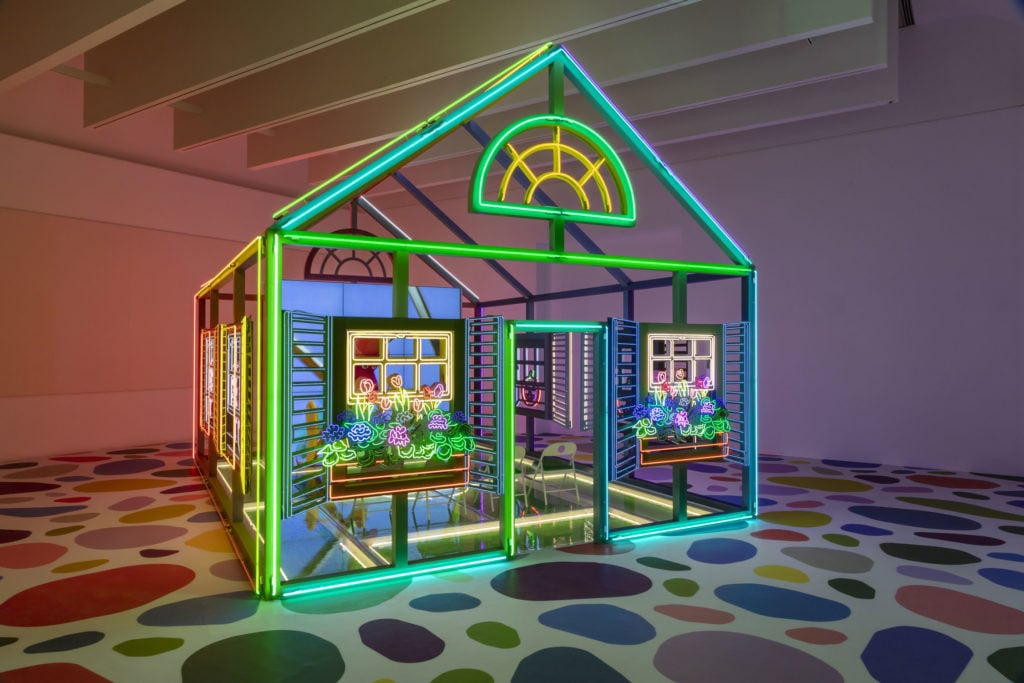
Alex Da Corte, Rubber Pencil Devil (2018). Courtesy of the artist and Karma New York. Photo: Tom Little.
Even when production costs are covered, Locke estimates that he works at a financial loss on biennials once he factors in all the time spent on meetings, research, and administration—“not to mention the studio time that I could be using to make work for other projects or to sell.” (On the other hand, he says, “if you can attend, it is always exciting and often surprising to see your work and for it to be re-assessed, next to artists from around the world.”)
Veteran biennial curator Francesco Bonami says that money has changed the dynamic between artists and biennial curators. “Once, to be invited to the Venice Biennale or at the Whitney was for an artist of different generations or financial status a true achievement and an honor. Today, it’s often a nuisance for them. Curators are pariahs, forced to beg an artist, even a longtime friend, to accept an invitation.”
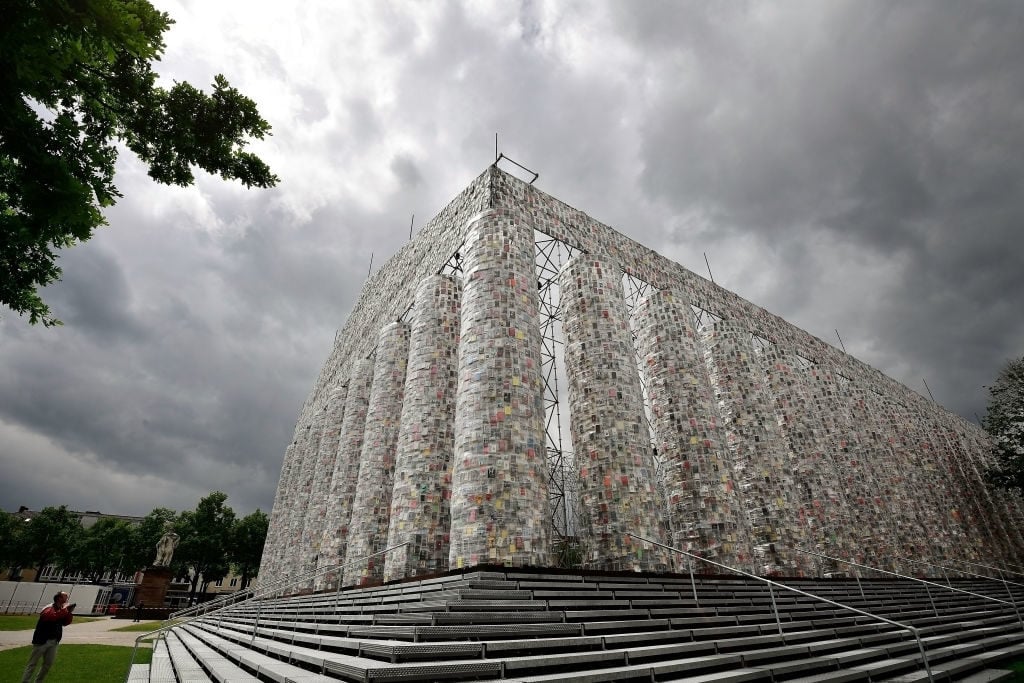
‘The Parthenon of Books’ by artist Marta Minujin in Kassel during documenta 14. Photo: Thomas Lohnes/Getty Images.
Whichever way you slice it, these initiatives are expensive. The notoriously over-budget documenta 14, which was held in Athens as well as Kassel, cost €50 million ($56 million). The foundation did not confirm how much of that went to artists and the production of new works, but a spokeswoman says that the 160 exhibiting artists received financial compensation and travel costs. Photographer Moyra Davey, who presented in both Kassel and Athens, said she was well supported. A spokeswoman for the documenta foundation says that “two thirds” of documenta 15’s overall budget of €42.3 million ($48 million) is earmarked for the production of art, installation, travel, and fees.
Meanwhile, a spokeswoman for the Venice Biennale confirms that the budget for this year’s main exhibition, “May You Live in Interesting Times,” is €13 million ($14.6 million), equivalent to the reported budget of Christine Marcel’s Venice exhibition in 2017. (This year’s show includes 79 artists, down from 120 in Macel’s “Viva Arte Viva.”)
But organizers say it’s difficult to keep it all afloat when costs are rising and budgets only remain steady. In a statement, the president of the biennale, Paolo Baratta, complained that the cost of transportation across the Venice lagoon has doubled this year. It has “obliged us to ask for additional support” from what he called “market participants,” referring to patrons, galleries, and other sponsors.
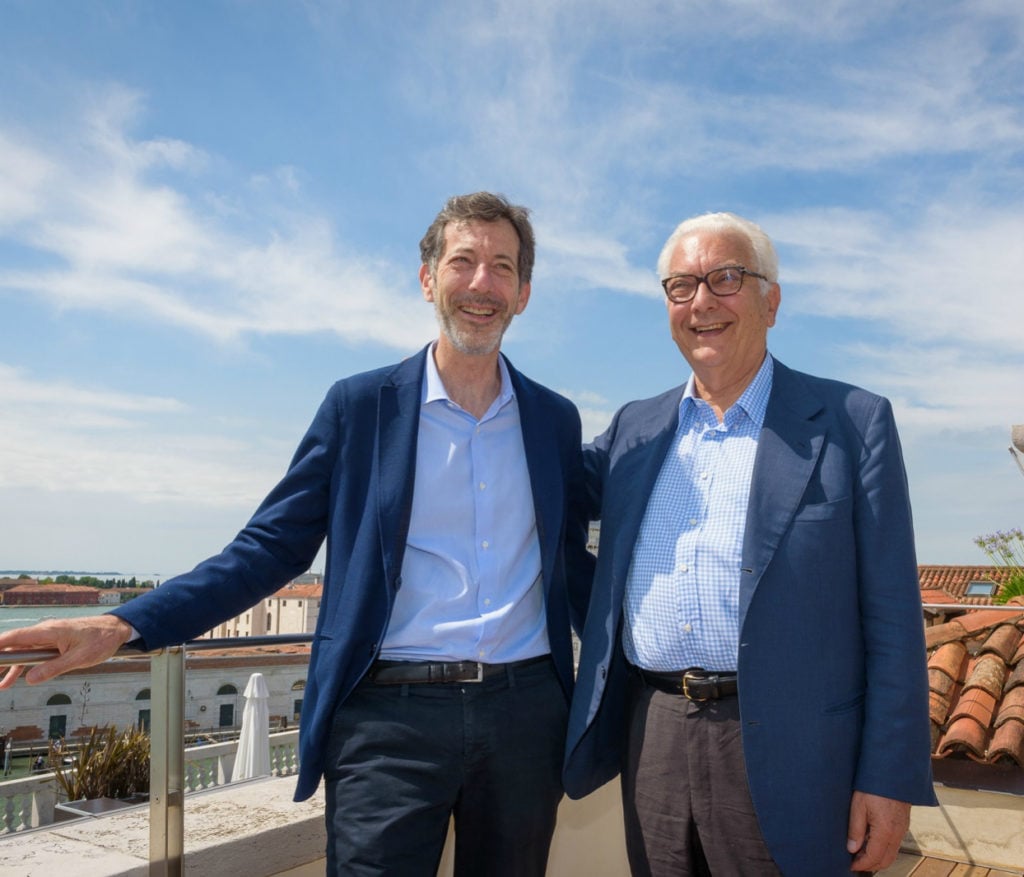
Ralph Rugoff and Paolo Baratta, Photo by Andrea Avezzu, courtesy of La Biennale di Venezia.
Galleries now regularly front the money for production of ambitious biennial projects—and recoup their costs if the work sells. But the Berlin-based artist collective Slavs and Tatars, who are participating in this year’s Venice Biennale and organizing this June’s Ljubljana Biennial of Graphic Art, question whether this is truly is a “win-win situation.” They say that it is “unethical and disingenuous for institutions to have the cost of work subsidized by the artist themselves, since the gallery will inevitably ask for this money back, in a future sale or otherwise.”
Bonami points out that, often, the financial participation of an artist’s gallery is mandatory. “This creates some possible conflict since, rightly so, the dealer needs to try to sell the work in order to get back the money invested,” he says. “It’s a murky and thin line a curator needs to address and be careful of in remaining independent in his or her choices.”
These demands aren’t always sustainable for dealers, either—especially when the works artists want to make are distinctly non-commercial. “Artists are expected to make a career-changing work that is not always the easiest to place—even if it has been shown in a biennale,” notes Malin Ståhl, the co-founder of London’s Hollybush Gardens, which represents Charlotte Prodger, who is the Scottish Pavilion’s official artist in this year’s Venice Biennale.
The German gallerist Johann König, who represents Jeppe Hein, the Danish artist who’s among those chosen for this year’s main exhibition in Venice, confirms that while the biennial is covering the shipping and installation of Hein’s work, “we have to pay for fabrication.” He is sympathetic to artists who might have to tone down their ambition—or even decline to participate—because they can’t afford production. “Sometimes you wonder what happens with those [artists] who don’t have a market,” he says.
And even major galleries can no longer offer guaranteed support. “Generally my sense now is that even the larger galleries are tapped out,” Neville Wakefield observes.
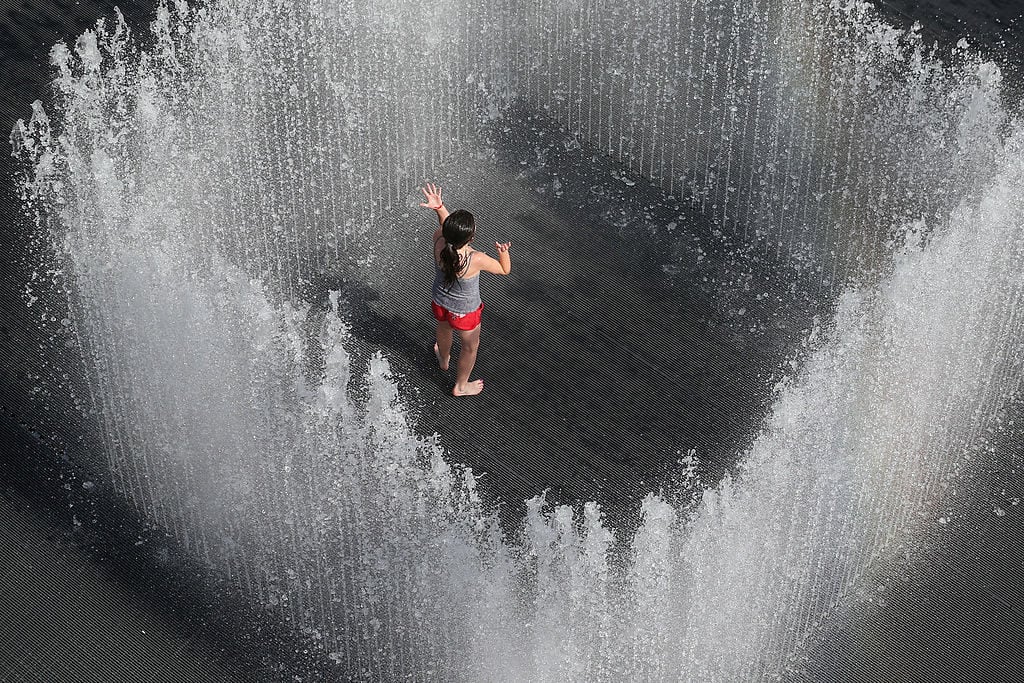
A girl plays in the fountain ‘Appearing Rooms’ by Danish artist Jeppe Hein, on the Southbank. Photo by Oli Scarff/Getty Images.
So if galleries, governments, and artists can’t afford to fully participate in the biennial economy, who can? Massimiliano Gioni, who served as artistic director of the 2013 Venice Biennale, says that one of his biggest struggles was securing general funding from donors that his curatorial team could use freely to support artists who were not represented by a gallery. As part of his shift, collectors are more frequently underwriting work that they may later acquire.
The Italian philanthropist and collector Patrizia Sandretto Re Rebaudengo says that large-scale exhibitions have always been keen to present new, ambitious productions—and she has been happy to help artists realize them without strings attached. At the 2017 Venice Biennale, her foundation helped fund Alicja Kwade’s new sculpture, WeltenLinie, which is now part of Re Rebaudengo’s Turin-based collection.
For his part, Storr regrets “the reliance upon [the market] to subsidize what should, in fact, be subsidized by the municipality and country in which the biennial is taking place, or by patrons who are disinterested or do not have an agenda.” Increasingly, he says, patrons are getting involved in “who or what gets shown, and I think that a bad thing.”
This dynamic also privileges the production of new work over other less glamorous costs associated with biennials. “No one wants to pay for the paper clips, they want to pay for the glory but these things are at a certain level made of paper clips,” Wakefield says.

“Artist book” by Daniel Knorr at Documenta 14 in Athens, Greece. Photo by Milos Bicanski/Getty Images.
Despite all these knotty issues, there may be further change afoot. Last year, the Carnegie International became the first such organization to earn certification from W.A.G.E (Working Artists and the Greater Economy), guaranteeing artists a fee of $1,500 aside from production, insurance, and other related costs. “Fees were the same for every artist, regardless of their support structures, career status, or work,” says W.A.G.E. co-founder A.L. Steiner. Furthermore, the Whitney Biennial announced it would pay participating artists a $1,500 fee for its upcoming exhibition, a higher sum than it has in the past. Production remains outside the scope of WAGE certification.
Some note that the issues of how and whom to pay—when no one seems to want to compromise—is systemic throughout the art world, not just in biennials. Rafal Niemojewski, the director of the New York-based Biennial Foundation, points out that artists are also frequently asked to self-fund their works for museum group exhibitions.
Plus, he says, it is surprisingly rare for artists to be left completely in the lurch—though he recalls a “difficult” Moscow biennial when “a bunch of artists didn’t get paid at all” after “they invested a lot of money for production and shipping.” He urges artists to make sure they have a contract, and if they do, to read it thoroughly.
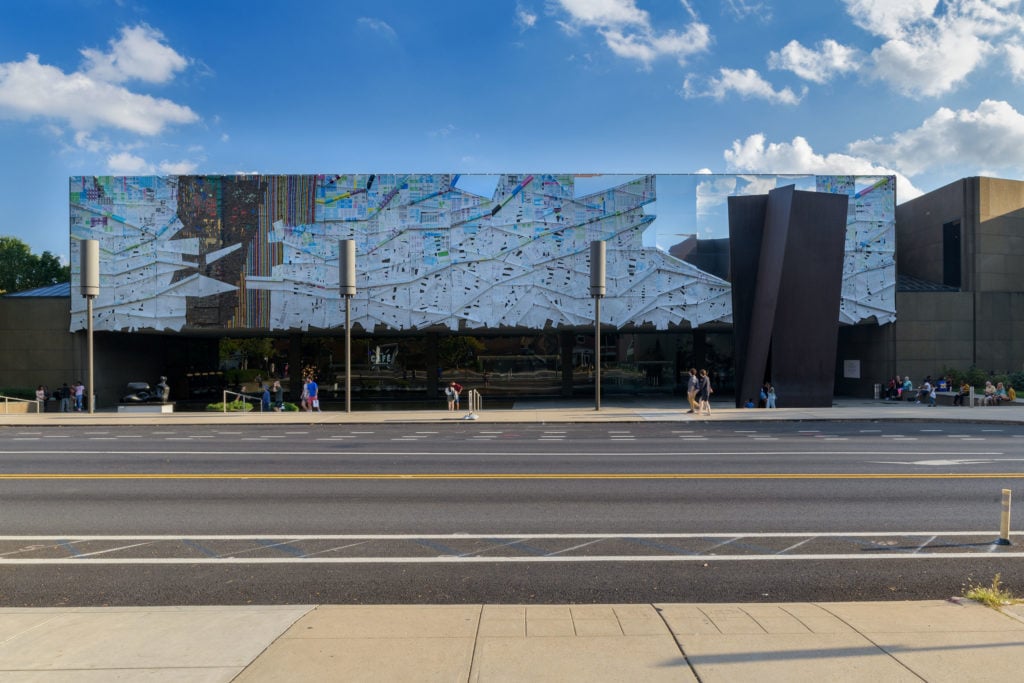
The Carnegie Museum of Art, covered in El Anatsui’s Three Angles (2018). Courtesy the artist and Jack Shainman Gallery. Photo: Bryan Conley.
Part of the problem in the end, notes experienced biennial curator Lewis Biggs, stems from the organizer’s and curator’s visions, “which by their nature [are] more ambitious than their circumstances allow.” But in the end, artists and curators can often pull off miracles on a shoestring.
Of the forthcoming 12th edition of the Kaunas Biennial, for which he serves as a consulting curator, Biggs says: “I am astonished they can make any kind of exhibition. But they are well used to it. There is nothing in it for the artists, sometimes not even a train fare.”
Unlike in a museum, where the artists and curators are quite high up in the power hierarchy, “in the real world” of biennials, “they are somewhere near the bottom,” Biggs notes. In these circumstances, he says, it is important for the curator to be honest with artists they invite to take part.
“I would say: ‘I am not in control of this situation, be aware that it may not end up the way I want it to or you want it to.’ Sometimes artists say they won’t want to put up with that kind of thing. Others say they are up for the adventure.”